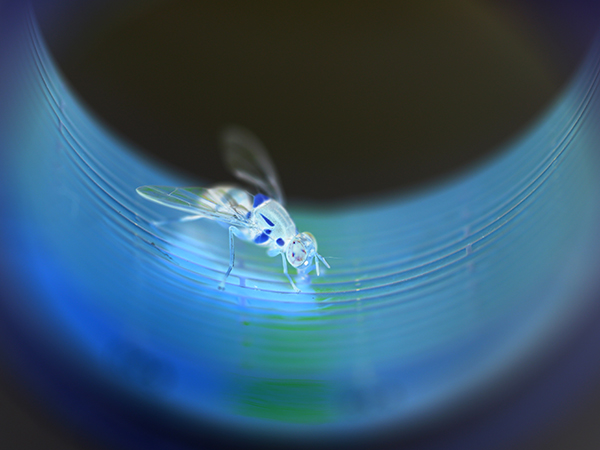New tech trials real-time fruit fly monitoring and alert system

Fruit fly in a trap. Photo: Andy Wang.
New technology developed by scientists from CSIRO could change the way we monitor the world’s biggest biosecurity barrier to trade: the fruit fly, which costs Australia more than $300 million a year.
The technology, known as RapidAIM, uses low-powered smart sensors to detect insects such as fruit fly from their characteristic movements.
The sensors, which can be placed by the thousands, send data to a cloud using a radio modulated technique. Growers can then see real-time data flow of the pest on their farms and regions through a linked mobile app.
With the support of Main Sequence Ventures, who manage the CSIRO Innovation Fund, CSIRO are now taking this innovation to growers around Australia.
RapidAIM CEO and former CSIRO researcher Dr Nancy Schellhorn said the new technology can reduce crop loss and provide early warnings of future pest hotspots.
“Growers rely on weather radar and take action accordingly, but until now there hasn’t been any pest ‘radar’ to support them against pests like fruit fly,” Dr Schellhorn said.
“This new technology can reduce the time spent manually checking fruit fly traps by more than 35 per cent, and provides and immediate picture of fruit fly presence in specific locations to enable a rapid response for control.”
RapidAIM was successfully trialled by some of Australia’s biggest fruit producers in Shepparton, Victoria last year, with positive feedback from trial participants and requests for a similar system against pests such as codling moth.
Dr Schellhorn said the technology has huge potential for managing a range of food and fibre pests, and that it could help growers target their pest management efforts.
“Around the world, more than 900 million tonnes of insecticide is used to control insect pests every year, but 98 per cent reaches a target other than the intended destination,” Dr Schellhorn said.
“With RapidAIM technology, crop-protection products can be used in a more targeted way.”
With trade tipped to more than double over the next 20 years, CSIRO is working towards introducing more real-time, autonomous digital biosecurity systems such as RapidAIM, to manage pests and help Australia maintain its high level of biosecurity into the future.
A further trial comparing RapidAIM traps to existing manual traps will soon begin in locations in SA, WA, NSW, VIC and Tasmania, before the technology is fully commercialised in coming months.
- To find out more or to stay updated about RapidAIM’s progress, visit http://rapidaim.io.



